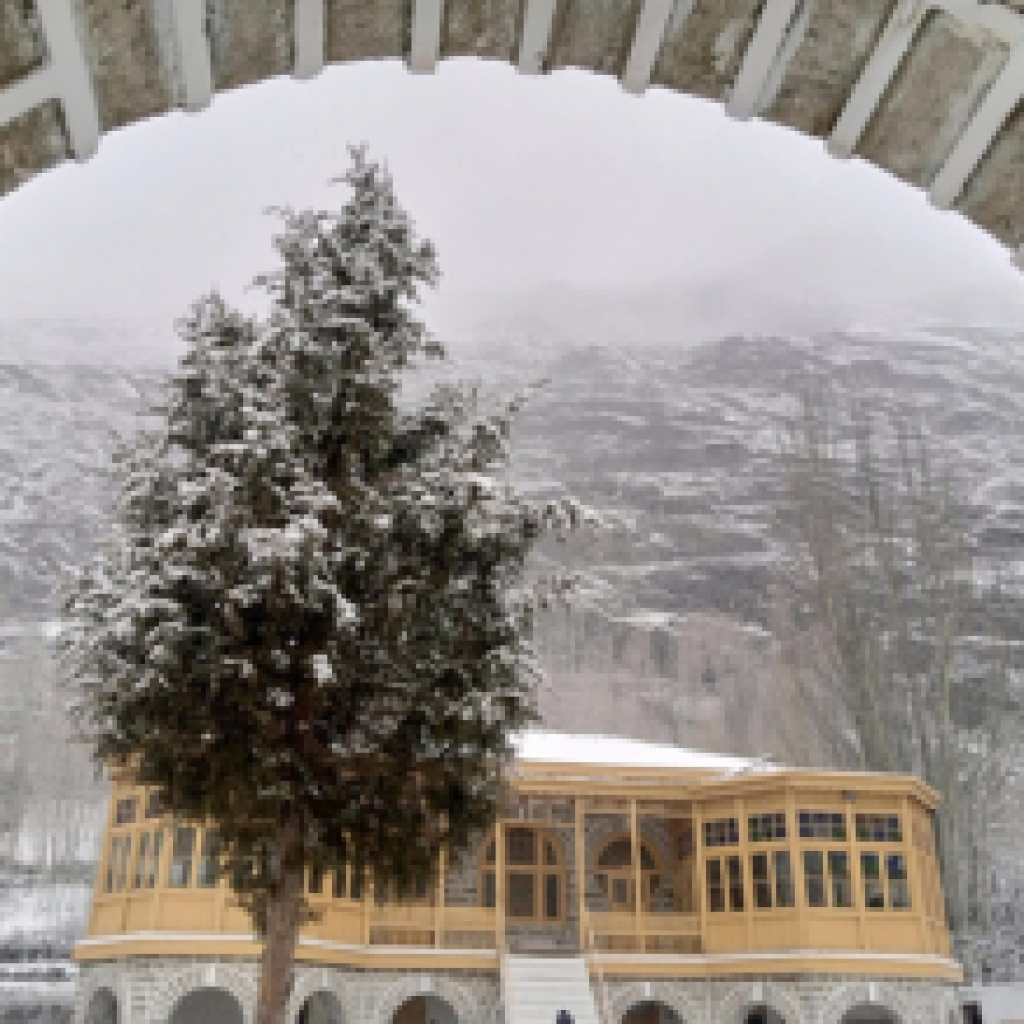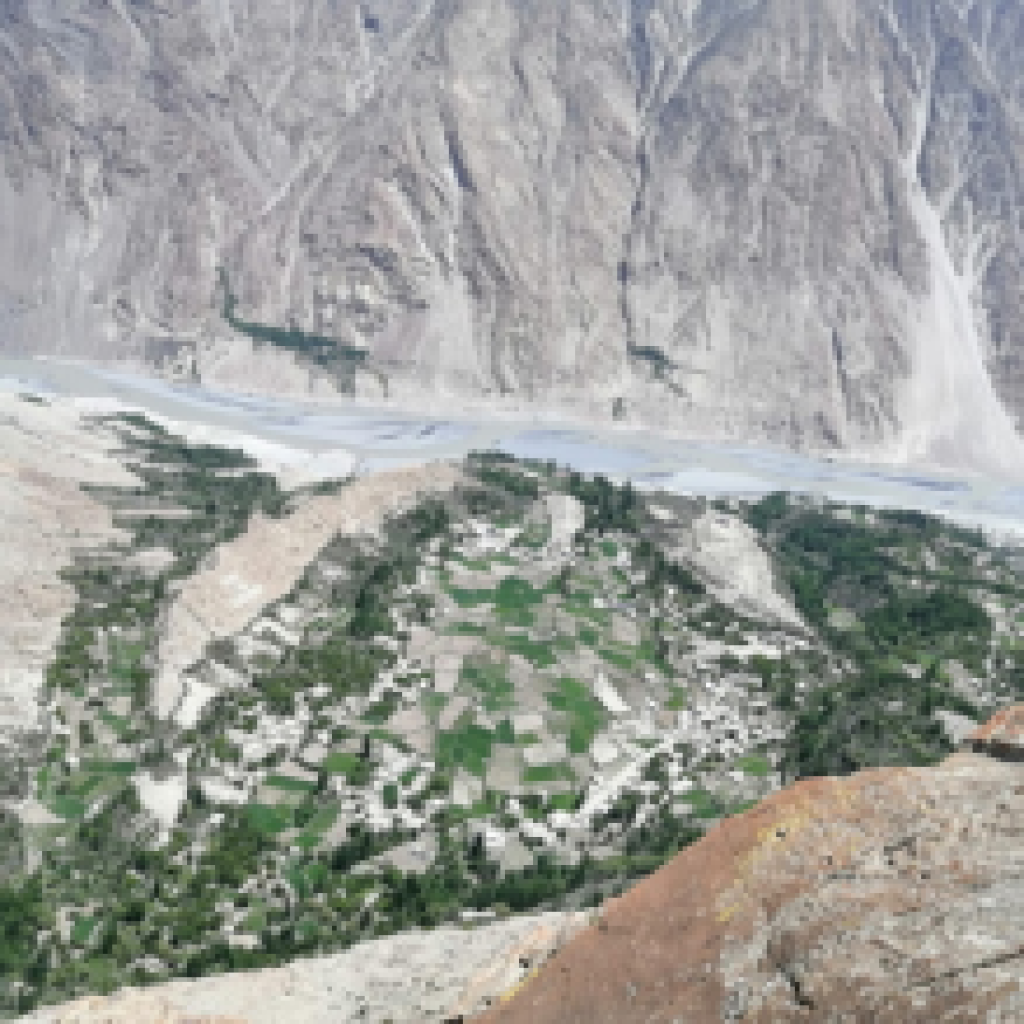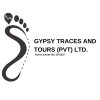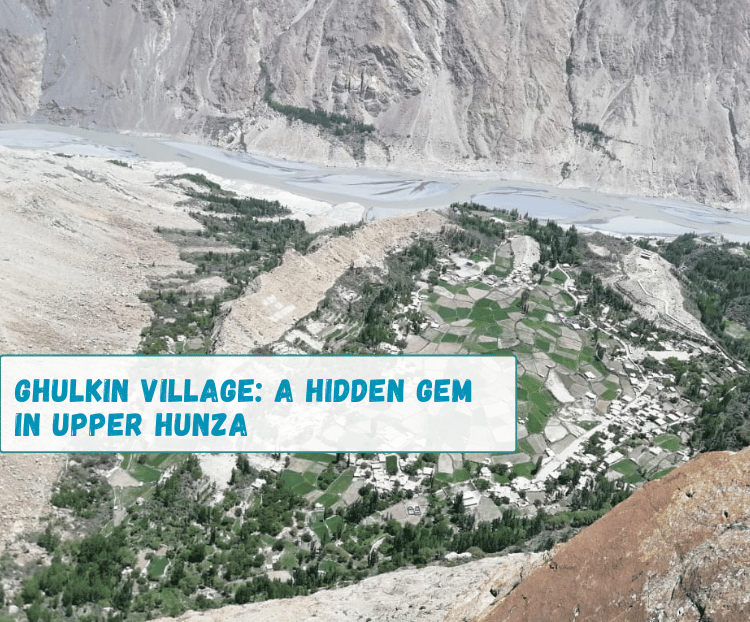Discover Ghulkin Village in Hunza: A 900-year-old hidden gem. Explore its culture, nature, and historical treasures in this insightful guide by Gypsy Traces and Tours.
Table of Contents
Introduction – Ghulkin Village



Nestled in the heart of the enchanting Gojal region of Upper Hunza, Ghulkin Village is a hidden gem waiting to be explored. This picturesque village, which is more than 900 years old according to local folklore, is a place where tradition, natural beauty, and culture come together in perfect harmony. Situated just 140 kilometers north of Gilgit and accessible via the iconic Karakoram Highway (KKH), Ghulkin Village is a place that offers a unique blend of natural wonders, cultural richness, and warm hospitality. In this detailed article, we will take you on a journey to Ghulkin, providing you with valuable insights and tips to make the most of your visit.
History and Origin
Ghulkin Village’s history is shrouded in the mists of time, with no concrete historical records. Local folklore suggests that settlements existed in this area even when a glacier-fed lake still existed, using the land as pasture during the summer. The name “Ghulkin” is derived from the local Wakhi dialect, with “Ghulk” meaning ‘well’ and “kin” meaning ‘whose,’ signifying its association with a water source.
The settlement’s prosperity began when Khawaja Ahmedi (KojaBusing), a Ismaili Muslim who traveled from Darwaz Badakshan, approached the Mir of Hunza for land. With the Mir’s consent, KojaBusing constructed a water channel for irrigation. This vital resource made agriculture possible, and the community in Ghulkin flourished. Today, the village boasts small-scale health and educational institutions, financial, and water supply facilities. Capacity-building NGOs have also played a role in establishing a handicraft production center and vocational training opportunities.
Geography and Climate
Ghulkin occupies the site of an old glacier-fed lake that has been silted up over time, creating a charming circular arrangement of traditional dwellings. The village offers stunning views of the surrounding peaks and glaciers, including KKH to the east, Ghulkin Ghar to the west, Putoondas Glacier and Peaks to the north, and Ondra Poyga Gulmit the south.
The climate in Upper Hunza is characterized by long, cold winters with temperatures below freezing. Summers are comparatively milder, with temperatures hovering around 30 degrees Celsius. The harsh winter landscapes are transformed into a winter wonderland, making it an ideal destination for winter travelers.
Getting There
To reach the Village, start your journey in Gilgit, which is approximately 140 kilometers to the south. The road trip to Ghulkin takes 3-4 hours by van, and it’s a memorable journey along the scenic Karakoram Highway (KKH). After passing Gulmit, you’ll find a turn-off leading to Ghulkin. A winding jeep track takes you upwards for 3 kilometers, unveiling the first houses of the village as the terrain levels out.
Places of Interest
Ghulkin and its surroundings offer a plethora of attractions for nature lovers and adventure seekers:
1. Borith Lake: Approximately 2 kilometers north of Ghulkin, this saline lake sits at an elevation of 2,500 meters. It’s a vital sanctuary for migrating wildfowl, making it a bird-watcher’s paradise. Visit between March and June to witness large numbers of ducks arriving from southern Pakistan.
2. Ghulkin Glacier: A short one-hour trek takes you to Ghulkin Glacier, providing a glimpse of the icy wilderness.
3. Passu Gar Glacier: For a more adventurous journey, embark on a 4-5 hour trek to Passu Gar Glacier, crossing both Ghulkin Glacier and Borith Lake. This trek offers breathtaking views of the glacier’s icy crenellations.
4. Trekking Routes: Ghulkin and its surroundings are a haven for trekkers. You can choose from one to three-day treks or longer hikes. The proximity of major glacial valleys like Ghulkin, Passu, and Batura glacier provides ample options for trekking enthusiasts.
Camping Sites
Borith Lake and the summer pastureland of the Patundas are ideal camping grounds, offering serene natural settings for outdoor enthusiasts.
Local Accommodation
Ghulkin offers small, simple hotels and guesthouses, both in the village and around Borith Lake. You can savor local cuisine and refreshments at these locations.
Main Tourist Season
The prime tourist season in Ghulkin typically runs from June to mid-October. This coincides with pleasant weather and the accessibility of the Khunjerab Pass, which leads to China. However, for intrepid travelers, Ghulkin has unique rewards to offer even during the winter months, with the landscape cloaked in snow and opportunities to spot local wildlife.
Cultural Events
Ghulkin embraces its rich culture with various events:
| Ghulkin’s Calendar of Annual Cultural/Religious events 2024 | ||
| Date | Type of Event | Event Details |
| 2nd Last week of February | Kith Dith | A small event to celebrate the survival from the harsh winters. Saying Goodbye to the harsh winters. Bring baked food from each household to the Jamatkhana and eat together. |
| 05 February | Imamat Day | To celebrate the Imamat Day of His Highness the Aga Khan in 2025 as 50th Imam of the Ismaili Muslims. |
| 2nd Friday of March | Taghum (seeding) | To start the beginning of seeding the fields. It is a day of hope and determination to produce survival means. It is a two days event. First day is Pirkithn (making the sweet dish Semn) and the second day is Chirg (ploughing) where the religious head prays for the community and the lucky family member (Shogun) starts the plough. All male children of age 4/5 are introduced to the plough field (signifying the helping hand). The young boys and girls throw apricot juice on each other in groups to make fun of each other. |
| 21 March | Nawroz | It is more of a religious event in the region and celebrated with religious zeal and fervor. |
| 1/2 April | Eid ul Fitr | A religious event celebrated with religious zeal and fervor. |
| First Friday of June | Wingus-tue (Marriage of the Sparrow) | It is to celebrate the biodiversity of the village. The birds start chirping and mating as they find enough food. |
| Last Friday of June | Chneer (Harvesting Festival) | It is called ’Basaki’ in Punjab. It signifies the start of harvesting season. |
| 7/8 June | Eid ul Adha | A religious event celebrated with religious zeal and fervor. |
| 14 August | Independence Day | Pakistan Independence Day |
| Last Friday of September | Kuch Kudoie | It is thanks giving day after our livestock have returned from the pastures. |
| 12 October | Birthday of the Imam | To celebrate the Birthday of ‘His Highness the Aga Khan V’ in 1971. |
| 23 October | Didar Day | To celebrate the first visit of His Highness the Aga Khan’s visit to Hunza in 1960. |
| 31 October | Liberation Day | To celebrate the liberation of Gilgit Baltistan from Dogra occupation. |
• Local Handicrafts
Ploss and Pattu are traditional local handicrafts. Pattu, made from sheep’s wool, is used to craft caps, sweaters, gloves, blankets, and various garments. Ploss, spun from goat hair, is used to create durable local carpets. Purchasing these handcrafted items directly supports the community and empowers the local artisans.
Historical Places
Explore the oldest house in Ghulkin Village, known as Busing House, which serves as a small museum filled with artifacts of historical significance. A small contribution helps in the restoration of this ancient building. Nearby in Gulmit, visit the old residence of the local Mir, which houses possessions that narrate the area’s rich cultural heritage.
Flora and Fauna
The region around Ghulkin features juniper trees, wild rose, willow, and birch, which add to the natural beauty. In spring, fruit trees blossom, transforming the landscape with delicate scents and pastel colors. Wildlife in the area includes the snow leopard, Himalayan ibex, wolf, red fox, and hares. Red foxes and hares are common sights during treks, while the ibex can be spotted from January to May in the nearby nullahs. Spotting the elusive snow leopard is a rare but exciting experience.
Birds
Ghulkin is a birdwatcher’s paradise with various bird species, including wagtails, golden orioles, sparrows, hoopoes, choughs, and more. The community enjoys games like volleyball, football, and cricket, making the central area of the village a hub for sports and recreation.
Games
Although Ghulkin is a small village with limited amenities, the local community enthusiastically participates in various sports, including ice hockey, curling, and speed skating during the winter. Additionally, they engage in traditional games such as volleyball, football, and cricket, which are often played in the village’s central area, agricultural fields, or gardens. Children even put their creativity to the test by inventing games resembling polo, albeit without the costly horses.
Conclusion
Ghulkin Village in Upper Hunza is a hidden gem that invites travelers to experience its rich culture, natural beauty, and historical significance. Whether you’re a nature enthusiast, a cultural explorer, or an adventure seeker, Ghulkin offers a range of experiences that will leave a lasting impression.


0 Comment